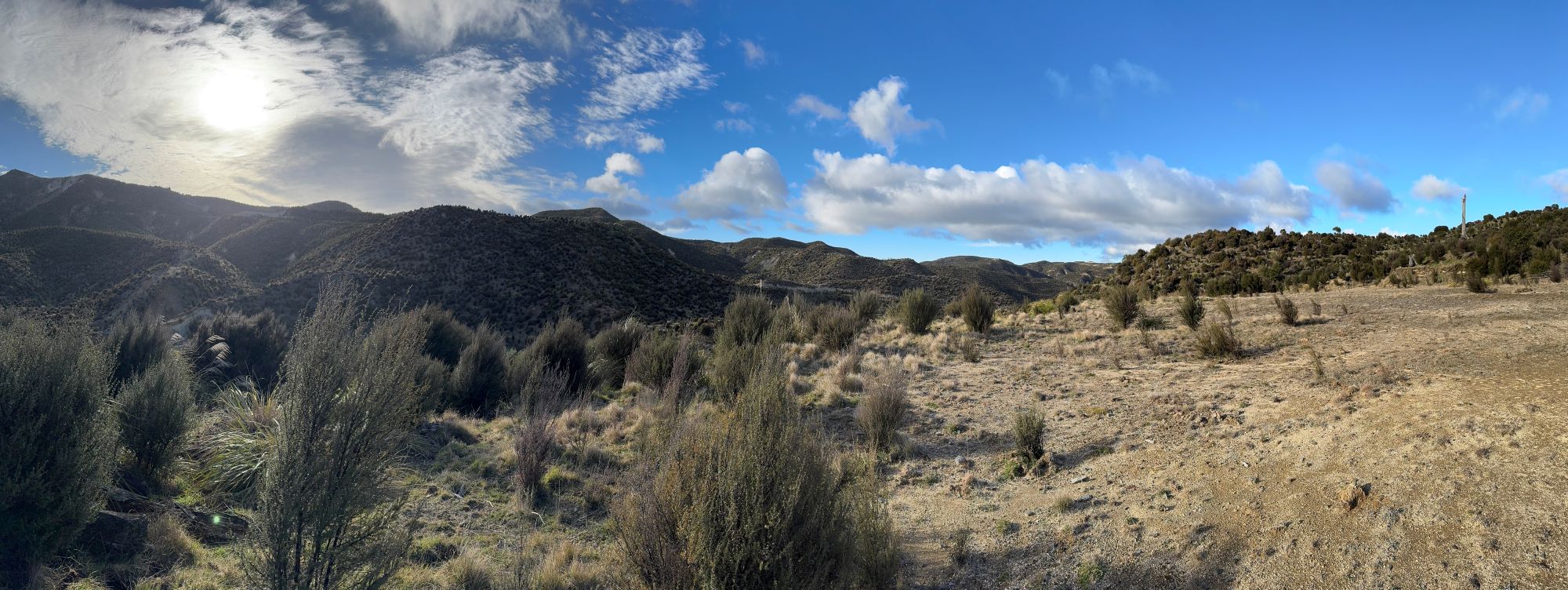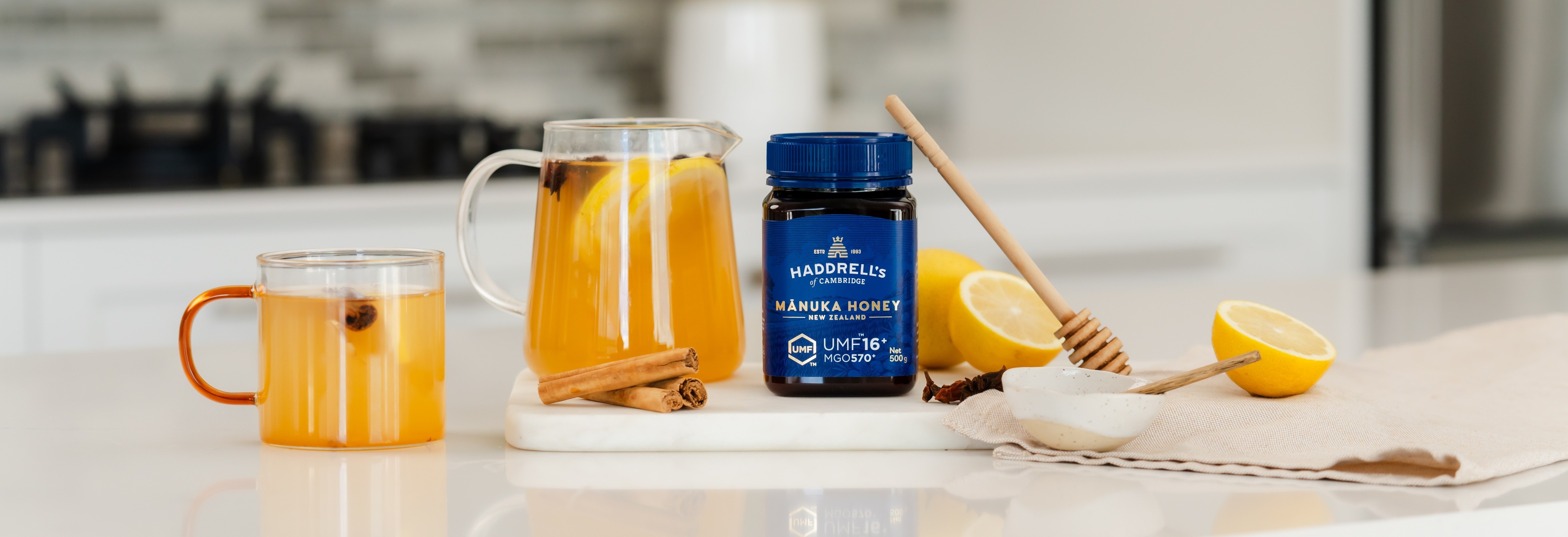Mānuka honey’s unique properties
Mānuka honey is made from the nectar of the native mānuka tree (Leptospermum Scoparium) which is only found in New Zealand. This makes mānuka honey truly remarkable. The combination of the unique nectar from the mānuka flowers and the hardworking bees gives this special honey its unique properties. That’s the magic of mānuka, backed by science.
Its 2,300 signature markers have been scientifically identified. The naturally occurring prominent markers are Leptosperin, Methylglyoxal (MGO) and Dihydroxyacetone (DHA), all measured under the Unique Mānuka Factor (UMF™) quality assurance system.



The beauty of using mānuka honey
Natural Energy
Mānuka honey is a great source of natural energy to help fuel your day. Enjoy a spoonful when you need a boost.
Unique
Mānuka honey's rich combination of unique properties makes it very special. Many people use it as part of their everyday routine.
Taste
Mānuka honey has a distinct flavour and rich aroma. Whether it's a snack, spread, sweetener or ingredient, mānuka honey always adds natural sweetness in a delicious way. Use our recipe.
Guarding a generational treasure
Māori were the first to discover the very special properties of the mānuka tree. Historically they used the mānuka bark and leaves for culinary and medicinal purposes. They now regard this honey a sacred treasure.
When the Europeans arrived in New Zealand in the late 1700s, Captain Cook’s crew learned quickly that they could boil the mānuka leaves to make tea.
Today the special characteristics of our precious mānuka honey are widely recognised around the world.

Honey has naturally occurring sugars: fructose, glucose and a number of complex sugars. Their ratio influences its texture. It is the glucose that crystallises, the fructose remains soluble. The more glucose in a batch of creamed honey, the greater its influence on the consistency of the honey.
Creamed honey is also known as crystallised honey. Liquid honey is converted into creamed honey through a controlled crystallisation process; we add starter crystals and churn the honey for several hours. At the end of the process all the honey has even crystallisation and is classified as creamed honey.
Various factors affect the honey’s colour, including the region, season, climate and the ratio of naturally occurring sugars.
Honey colour from a single floral type can vary due to the different soils the plants grow in. Some regions produce darker honey, some lighter for the same floral type.
The course of the seasons and climate also plays a part. A honey’s colour, texture (hardness/smoothness) and indeed taste can vary from region to region and season to season. The ratios of the various naturally occurring sugars present in honey (fructose, glucose) influence honey’s colour and texture when crystallised (i.e. creamed). Glucose crystals are white so if there is a higher content of glucose the honey may be tinted lighter.
Bees collect the nectar from the mānuka flowers to create honey. Mānuka flowers only bloom for approximately 2-6 weeks in December every year, giving the bees a very short time period to collect the nectar.
Beehives are placed in remote regions to get the best mānuka honey. This demands a high level of resources all year round to care for the bees, protect the hives and harvest the honey within this short timeframe. Sometimes access to these remote regions is made more difficult by weather events.
Storage conditions will depend on the local climate. We recommend keeping it out of direct sunlight and at a temperature of between 18°C and 22°C.
Baking with mānuka honey is certainly feasible and it adds natural sweetness and flavour. Depending on your budget, we advise using a lower UMF™ value.
Too much heat can affect the ratio between the two natural biomarkers, DHA to MGO. Therefore, we recommend that mānuka honey is stored between 18°C and 22°C.
Although mānuka honey has unique properties, it is still a source of natural sugars. Therefore it is recommended to be eaten in moderation and as part of a balanced diet.
Honey is sweeter than white sugar, so less honey is likely needed than sugar to get the same sweetness. However, the sweetness of the honey does depend on the type so we recommend you trial using different amounts of honey to replace sugar in your application.
Our honey is from our hives placed in remote areas in New Zealand’s mānuka forests. It is not
officially classified as being organic.
Factors to consider when an individual makes the decision to eat honey when pregnant include the honey’s level of natural sugars, pasteurisation and potential allergies. It's always a good idea to consult with your healthcare provider for personalised advice.






.png)

